Dr. Vaglia
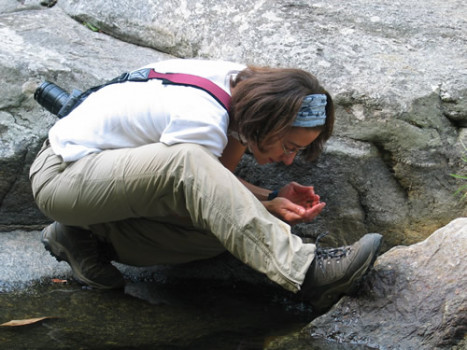
Ecirrigera Adult
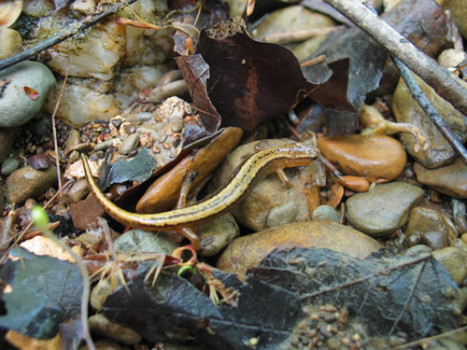
Blue Ecirrigera
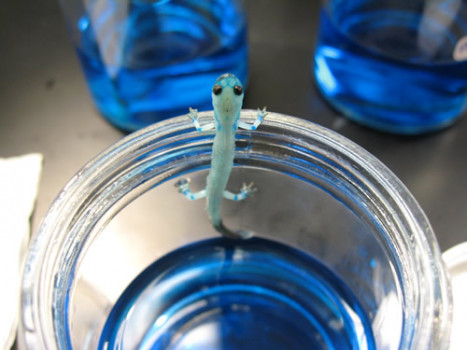
Janet Vaglia and her students study tail development and regeneration in the two-lined salamander, Eurycea cirrigera. Vaglia describes her lab as having the “exciting task of deciphering how salamanders are able to continually grow their tails beyond the embryonic period.” This ability to add segments to the body axis throughout life is a little understood phenomenon. Because salamanders can also regenerate portions of their body, such as limbs and tails, she hypothesizes that continuously growing the tail is related to the ability of salamanders to regenerate their tail.
In 2012 Vaglia and her students co-authored a paper published in Acta Zoologica. Here they describe the structure of the elongating tail for several salamander species. Vaglia and students confirm that elongating salamander tails indeed add vertebrae, spinal cord and muscle through adulthood.
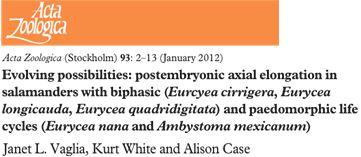 |
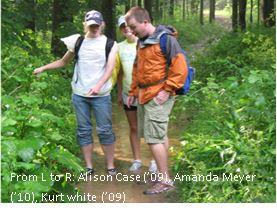 |
Vaglia explains that these research findings and their implications for regeneration were an important gateway to the $200,000 grant awarded her lab from the National Institutes of Health. At the time of the award, NIH was particularly interested in research done at the undergraduate level that has implications in the medical community. "You could look at a tail that's growing throughout a salamander's life as if it's constantly regenerating, but it's not technically regeneration until you remove part of it and the healing process begins," Vaglia explains.
Ongoing projects include: (1) describing tail segmentation and regeneration using select cell and tissue markers such as Pax6 and 7, (2) characterizing expression of posterior Hox genes across life stages in both the developing and regenerating salamander tail. “Ultimately, our work is important in the ongoing search for mechanisms and factors that could contribute to therapies attempting to induce re growth of tissue (e.g. nervous tissue) in organisms that have lost the natural ability to regenerate.
Professor Vaglia teaches courses in Development, Evolution and Organismal Biology.